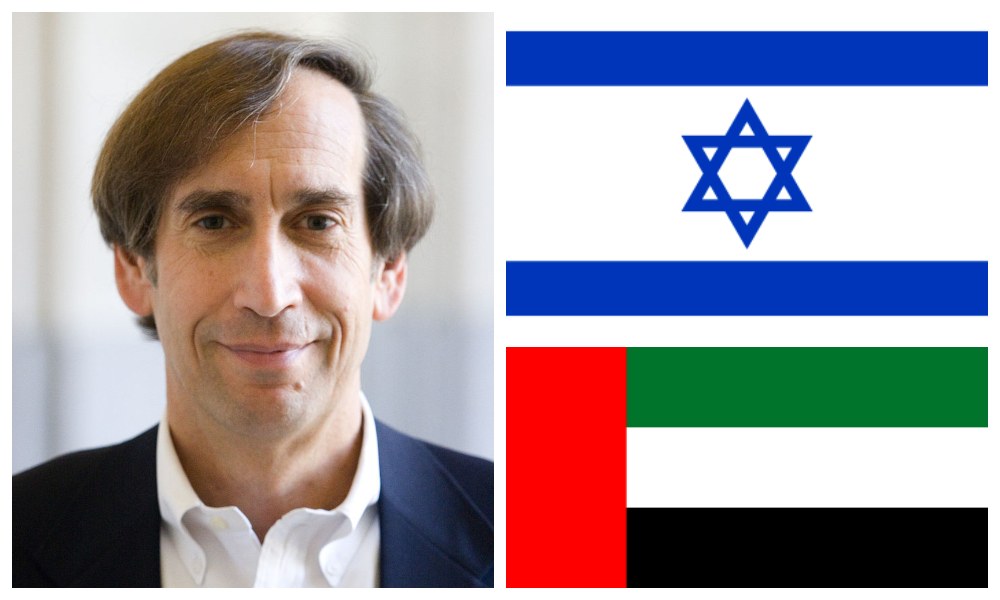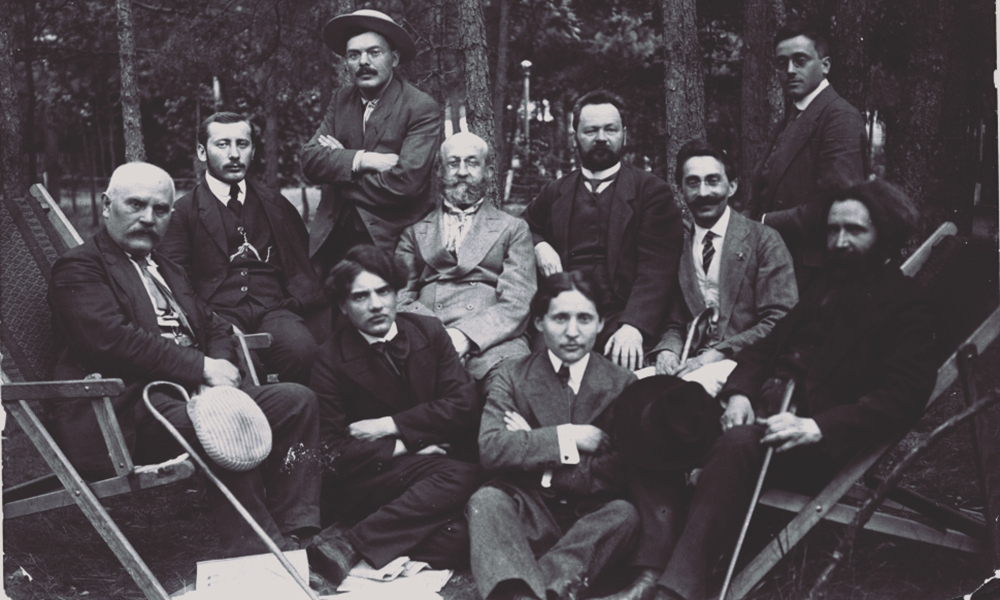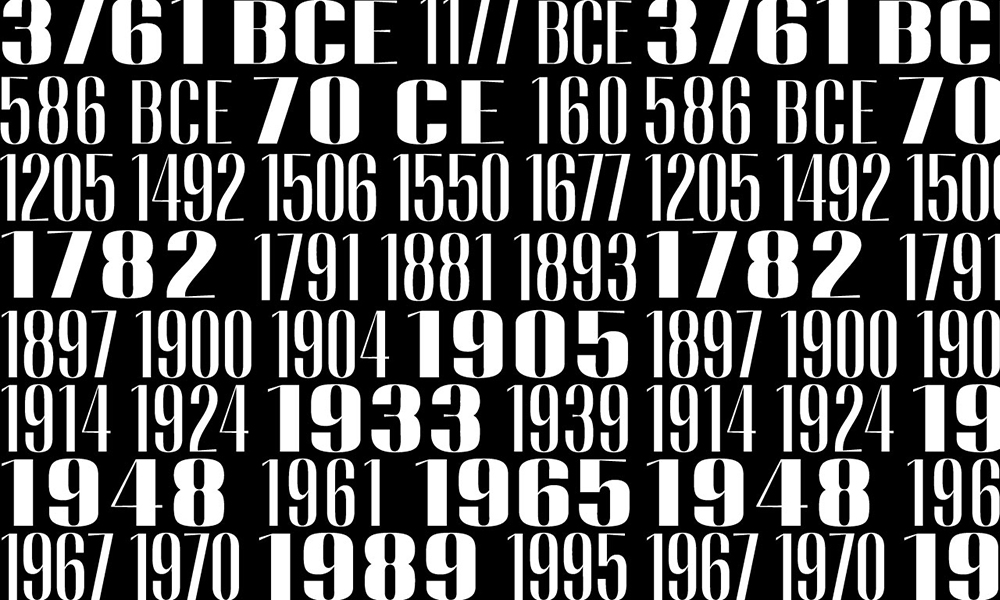A Moment Magazine Symposium.
Interviews by Daphna Berman, Sarah Breger,
Caitlin Yoshiko Kandil, Sala Levin
Dani Dayan
The two-state formula never really existed. Like a kind of diplomatic Truman Show, it existed only in an imaginary world, in which dozens of diplomats—Israelis, Arabs, Americans, Europeans and others—crisscrossed the world negotiating it, discussing formulas that will never be agreed upon, and—most importantly—spending thousands of nights in five-star hotels all over the globe. The “two-state industry” fed itself with optimistic narratives and crises to be defused in order to keep itself alive. But in the real world, it was a mirage, looking tempting from afar but revealed to be hot air when approached. But it is time to tell the truth. The two-state solution is unattainable and even if attained, it will not solve the conflict but aggravate it.
The reason the two-state formula never existed is simple in its complexity: Zionism—the national liberation movement of the Jewish people—rightfully believes Jews returned to their ancient homeland after 2,000 years of exile, while the Palestinian national movement—which couldn’t care less about King David or “next year in Jerusalem”—sees Zionism as a 19th-century European colonialist endeavor. Between those two, there is not even a theoretical point of convergence in the geo-political space. And if miraculously reached, it will collapse the inevitable moment the power in the Palestinian state is seized—by ballot or at gunpoint—by the Islamic fundamentalist Hamas. The claim that one state is the alternative to two states is no more than a linguistic manipulation. Both are impossible. Israeli society will not commit suicide and will not agree to give up the Jewish identity of Israel.
The truth is that at present, the Jewish-Palestinian conflict has no solution. One alternative is to despair. The other is to do the most beneficial things you can under this circumstance. And there is a lot to do that can actually change the lives of millions of Israelis and Palestinians. An ambitious and comprehensive program should be launched to dramatically improve security, human rights, freedom of movement, economic prosperity, housing and other conditions in this beleaguered area. Among its central points should be the removal of checkpoints and a potential dismantling of the security fence, joint large-scale industrial projects, renovation of refugee camps and a focus on human dignity. This will not solve the conflict; it will be a modus vivendi. It will not mean peace, at most a peaceful non-reconciliation. It will not be the final status; it will be temporary until new options arise. However, it is not a fantasy; it can become a reality.
Dani Dayan is an Israeli political activist and former chairman of the settlers’ Yesha Council.
Shaul Arieli
You hear from many people that Israeli settlements in the West Bank have destroyed the possibility of implementing the two-state solution. But that is not the case. The main Jewish settlement blocs cover no more than 6 percent of the West Bank. Inside the main Jewish blocs, 95 percent of the population is Jewish, and only 5 percent is Palestinian. Outside of the settlement blocs, 97 percent is Palestinian and only 3 percent are Jewish Israelis. Inside the blocs, the Israeli build-up area is six times bigger than the Palestinian build-up area, and outside of the blocs, the Palestinian build-up area is 16 times bigger than the Israeli build-up area. Again with roads, we see that inside the bloc, Israelis use more than 80 percent of the roads, but outside of the blocs, not more than 17 percent. Ownership of the land also follows the same trend. To sum up, you can see that inside the blocs we have relative Jewish dominance, but outside, complete Palestinian dominance. Therefore, to create a border that connects the major Israeli settlement blocs in the West Bank and the East Jerusalem neighborhoods to Israel requires annexing around 6 percent of the West Bank, which can be compensated with one-to-one land swaps, thereby reaching a two-state solution.
The problem is not physical but political. Here I believe we have a problem, especially from the Israeli side, because I’m not sure that the current Israeli government headed by Bibi Netanyahu is ready to negotiate. The Israeli government wants to enlarge the settlements, especially outside of the blocs. With half a million Jews in Judea and Samaria, they’re saying, “We cannot go on talking about the two-state solution; we need to start thinking about other alternatives.” Two of these suggested alternatives are to re-establish a Palestinian state in Jordan, and to push—or convince—the Palestinians in the West Bank to emigrate to Jordan. These are complete nonsense.
Ultimately, it’s about having the political courage to say, “Now is the time for the two-state solution.” The price of the two-state solution is something we can deal with. It’s better to evacuate 100,000 Israelis from the West Bank now than to have one state, or, under international pressure, to have to withdraw unilaterally to the 1967 lines.
Shaul Arieli is a former brigade commander for the Israel Defense Forces in the Gaza Strip and head of the administration for negotiations with the Palestinians. He is currently a managing member of the Council for Peace and Security.
Ruth Gavison
The two-state solution for Israel-Palestine is like democracy: The vision has many versions. Many in both camps have always rejected it adamantly, yet when compared to all available alternatives, it is clearly the winner. This was the conclusion of all the international bodies that have studied the issue since the 1930s: the Peel Commission in 1937, UN Special Commission on Palestine and the General Assembly in 1947. A commitment to this vision has been reiterated in many decisions by the international community since. This persistence, despite claims that it was not practical, is the core to understanding why, despite dramatic changes in the reality on the ground, the vision is still the one endorsed by most.
While the past three decades have moved us in some important ways toward a reality of one political and social territorial unit, there have also been key processes (such as the 1993 Oslo Accords and the creation of the Palestinian Authority, the 2005 Israeli withdrawal from Gaza and Hamas’s control of that territory) and interests, that push in the opposite way. A version of a two-states-for-two-peoples solution (hopefully with economic cooperation) is still easier to justify, and even more practicable, than any other plausible alternative—at least if we do not envisage major violence or war, which might again change the reality on the ground.
Israeli Jews and Palestinian Arabs are two distinct collectives. They have fierce internal debates about their identity, but they both see the land between the sea and the Jordan River as their homeland and insist that they be given independence in it. They have different aspirations, different narratives and stands on security, identity and immigration. They have not shown the ability or willingness to govern themselves in a way that will respect the rights of the others, within a shared territorial and political unit. This has always been the basic justification of the two-state solution.
The choice is between continuing to fight it out seeking to implement one of the incompatible competing claims, or acceptance that each of the groups will have political control and majority status only over a part of the territory, while seeking to protect the individual and collective rights of members of both groups in the whole territory.
It is the only vision that can be shared seriously by decent members of both communities. It should therefore serve all players, including the international community, as the guiding principle. Its implementation requires profound changes in the narratives and expectations of both parties. Its chances depend on a mutual understanding that neither of the groups is giving up. This may take time and creativity. Yet even if this understanding is not there at present, only denying this critical reality may explain the thought that the two-state solution is dead.
Ruth Gavison is the Haim H. Cohn emerita professor of human rights at the Hebrew University in Jerusalem and editor of The Two-State Solution: The UN Partition Resolution of Mandatory Palestine—Analysis and Sources.
Gil Troy
In some ways, the two-state solution has never been more viable than it is today. There’s a tendency when talking about the Middle East peace process to look for heroic figures, like Jimmy Carter and Menachem Begin, or Camp David-like breakthroughs. But peace is often achieved by building slowly. In the past few years we’ve seen the Israeli right-wing government recognize the two-state solution and lift checkpoints. On the Palestinian side, we’ve seen for the first time a prime minister, Salam Fayyad, start to talk about nation-building, not just destroying a neighboring nation.
Ten years ago, during the worst moments of Yasser Arafat’s war of terror, it looked like we were facing a future of constant terror in the U.S. and in Israel. Today, terrorism mostly has been defeated. Palestinians learned that suicide bombing will not be effective. Historians will look back at this moment and see it as the time when the Israeli political spectrum narrowed, and it became acceptable for people on the right to endorse the two-state solution.
The downside is we’re actually talking about a two-and-a-half-state solution. The West Bank is one entity, and Gaza has a separate political dynamic. Regarding Gaza there are both pessimists and optimists—the pessimists would see the emergence of a horrific sexist, racist, anti-Semitic, anti-Western, homophobic political culture being imposed on the citizens of Gaza. If it weren’t for people’s disturbingly low expectations for Palestinians, Hamas would make headlines regularly about abuses against Western decency. Even with that, you’ve seen some signs of Hamas going from guerrilla force to governing force.
Palestinians must take a major step forward, the way Israel took a major step forward after Oslo, and acknowledge Israel’s reality and stability. It will only happen when they stop celebrating terrorism as an alternative to peacemaking and stop delegitimizing the Jewish state. Palestinians also need legitimate leadership—with a mandate to build their state rather than destroy the Jewish one.
The Israeli side should do a better PR job emphasizing Israel’s openness—that there hasn’t been a massive buildup of settlements or any major new settlements established. There’s new recognition on the Israeli side of a de facto Palestinian state. Israelis should show what’s happened, that there’s been extraordinary change on the Israeli side.
Gil Troy is a professor of history at McGill University and the author of Moynihan’s Moment: America’s Fight Against Zionism as Racism.














Once again, Moment magazine publishes a symposium without inviting a single Jewish or Israeli opponent of the currently proposed two-state solution (from Oslo through Olmert-Abbas) on the left .
Once again, Moment magazine disrepects Jewish Voice for Peace, not to mention Israelis who are willing to countenance either a one-state or a two-state solution that differs from the Oslo solution.
Once again, Moment magazine publishes the views of Palestinians who are hardly representative, certainly not of prominent Palestinian intellectuals.
Once again, Moment Magazine opts for lazy Jewish communal journalism.
The two-state solution will not work. Everyone knows why the Arabs and –Palestinians want land that belongs to Israel. They do not want Israel and the Jewish people exist.
First things first. The Arab nations that are neighbors of the Nation of Israel should give their Arab-brothers land to establish an Arab –Palestinian Nation.
There already is plenty of land – Jordan is roughly 3/4 of the original Mandate territory. On top of that, Palestinians already are the majority of the kingdom’s subjects. Why invent a new wheel?
I’m glad the two state solution is dead.
I wish it were otherwise, but Dani Dayan has it right: at present, the problem has no solution.
Regardless of the merits, Israelis and Palestinians both believe they have legitimate claims to the same land. Unless both simultaneously give up some of what they think belongs to them, no compromise is possible.
Neither side seems able to compromise much, and certainly not enough, since there is hatred and mistrust on both sides. I wish that I had the answer.
Its a political solution or a perpetual state of war which will almost certainly destroy Israels democracy. In addition a people
In despair will almost certainly turn to radical elements in their midst,in Israels case that could mean the most unyielding
of the religious right. New energy resources could make the mid-east a less important area of our foreign policy goals. In
addition after two costly wars that achieved little the American people by all accounts are becoming increasing leery of further
involvement in that area. In addition except for the most radical of hawks it is becoming apparent that we cannot continue to
send our all volunteer military on missions that involve multiple deploymrnts to be killed,or mutilated while the nation has
its guns and butter,and the gap between rich and poor becomes ever wider and represents a grave threat to democracy at home.
let’s nuke everybody
Arabs or Philistines who, in the name of struggle to “liberate” the land of Israel, committing suicide murders on buses, houses of worship, schools, colleges, restaurants and many other civilian places, acting in “desperation”, are in psychiatric terms : social Parriahs. Additionally, within their own enclaves, the murders, disappearances of Politcal dissidents, stoning of women, severe discrimination against opponents etc. makes those Arabs incapable of governing in any and all capacities. They belong to Egypt and Jordan whence they originated from they’ll be dealt with accordingly.
The two state solution is politically not achievable in Israel today: The right doesn’t want to implement it ideologically and the left is unable to, politically lacking the electoral strength to bring about a withdrawal of about 25,000 families from the West Bank. A similar inability to implement exists on the Palestinian side. The only way to move ahead is by extending Israeli law in the West Bank, extend Israeli citizenship to all Palestinians living there and leave Gaza as a separate state. This would finish the occupation and create a 60/40 demographic balance in a democratic Israel. If at the same time a federal structure is implemented, the regional subdivisions that are primarily Palestinian can later be incorporated in a Palestinian state, together with Gaza.